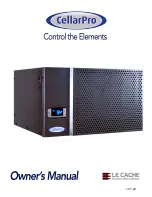
7
MICROWAVE COOKING ADVICE
Microwaves are energy waves, similar to those used for
TV and radio signals.
Electrical energy is converted into microwave energy,
which is directed into the oven cavity via a waveguide.
To prevent food and grease entering the waveguide it is
protected by the waveguide cover.
Microwaves cannot pass through metal, because of this
the oven cavity is made of metal and there is a fine metal
mesh on the door. During cooking the microwaves
bounce off the sides of the oven cavity at random.
Microwaves will pass through certain materials, such as
glass and plastic, to heat the food. (See ‘Microwave safe
cookware’ on page 8.)
To cook/defrost food in a microwave oven, the
microwave energy must be able to pass through the
container to penetrate the food. Therefore it is important
to choose suitable cookware.
Round/oval dishes are preferable to square/oblong
ones, as the food in the corners tends to overcook.
A variety of cookware can be used as listed on page 8.
Water, sugar and fat in food absorb microwaves which
cause them to vibrate. This creates heat by friction, in the
same way your hands get warm when you rub them
together.
The outer areas of the food are heated by the
microwave energy, then the heat moves to the centre by
conduction, as it does in conventional cooking. It is
important to turn, rearrange or stir food to ensure even
heating.
Once cooking is complete, the oven automatically stops
producing microwaves.
Standing time is necessary after cooking, as it enables the
heat to disperse equally throughout the food.
Microwaves cook food faster than conventional cooking.
It is therefore essential that certain techniques are followed
to ensure good results. Many of the following techniques
are similar to those used in conventional cooking.
Composition
Foods high in fat or sugar (e.g. Christmas pudding, mince pies) require less heating time. Care should
be taken as overheating can lead to fire.
Density
Food density will affect the amount of cooking time needed. Light porous foods, such as cakes or
bread, cook more quickly than heavy, dense foods, such as roasts and casseroles.
Quantity
The cooking time must be increased as the amount of food placed in the oven increases. E.g. Four
potatoes will take longer to cook than two.
Size
Small foods and small pieces cook faster than large ones, as microwaves can penetrate from all sides
to the centre. For even cooking make all the pieces the same size.
Shape
Foods which are irregular in shape, such as chicken breasts or drumsticks, take longer to cook in the
thicker parts. Round shapes cook more evenly than square shapes when microwave cooking.
Temperature
The initial temperature of food affects the amount of cooking time needed. Chilled foods will take
of food
longer to cook than food at room temperature. Cut into foods with fillings, e.g. jam doughnuts, to
release heat or steam.
FOOD CHARACTERISTICS
Arrange
Place the thickest parts of food towards the outside of the dish. E.g. Chicken drumsticks.
Cover
Use vented microwave cling film or a suitable lid.
Pierce
Foods with a shell, skin or membrane must be pierced in several places before cooking or reheating as
steam will build up and may cause food to explode, e.g. Potatoes, Fish, Chicken, Sausages.
Important:
Eggs should not be heated using microwave power as they may explode, even after
cooking has ended, e.g. poached, fried, hard boiled.
Stir, turn and
For even cooking it is essential to stir, turn and rearrange food during cooking. Always stir and
rearrange
rearrange from the outside towards the centre.
Stand
Standing time is necessary after cooking to enable the heat to disperse equally throughout the food.
Shield
Some areas of food being defrosted may become warm. Warm areas can be shielded with small
pieces of foil, which reflect microwaves, e.g. legs and wings on a chicken.
COOKING TECHNIQUES
Содержание ZNM11X
Страница 1: ...ZNM11X Microwave Oven User Manual ...
Страница 2: ......
Страница 35: ......
Страница 36: ...TINS A571URR0 Subject to change without notice 2 ...









































